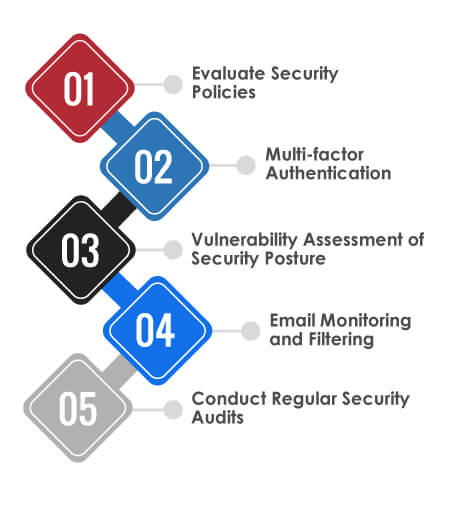
- What are Social Engineering Attacks?
- 5 Types of Social Engineering Attacks
- How Cybersecurity Testing Can Prevent Social Engineering Attacks
- Conclusion
- Why Partner with TestingXperts for Cybersecurity Testing?
Social engineering attack is the term used to describe a wide range of malicious activities like tricking individuals into revealing sensitive information or manipulating them to gain unauthorized access to systems. The attackers use different psychological manipulations to trick users into giving sensitive information or making security lapses. According to statistics, 82% of data breaches involve human elements, making social engineering the backbone of today’s cybersecurity threat. From smishing and vishing attacks to phishing emails, there are plenty of social engineering techniques hackers utilize to dupe their victims.
The attacks could happen in any form, from people visiting websites they should never visit, sending money to cyber criminals unintentionally, or making mistakes that could compromise organizational security. Even an email that seems to be from a coworker requesting data could lead to a social engineering attack. Thus, it becomes necessary for businesses to have relevant cybersecurity measures to counter social engineering attacks.
What are Social Engineering Attacks?

Social engineering attacks are the first stage of a large-scale cyberattack. For example, a hacker might dupe a victim into sharing personal details like usernames and passwords, which are used to inject ransomware or viruses into the victim’s employer’s premises. These attacks enable hackers to gain easy access to digital networks, accounts, and devices without facing technical issues of getting around firewalls and other cybersecurity controls. They use psychological tactics to obtain sensitive data such as financial information, credit card/debit card numbers, login credentials, social security or account numbers, etc.
5 Types of Social Engineering Attacks

Social engineering attacks could impact an organization in multiple ways. Following are some of the social engineering attacks that businesses should know about:
Phishing
Phishing is the most popular social engineering attack, including scamming users through emails and text messages involving a sense of urgency, fear, and curiosity. Attackers dupe users into revealing important data by asking them to click links to scam websites or open malware attachments. For instance, users received an email regarding online services alerting them about policy violations and asking them for immediate action. The actions might include username or password change, updating software components, etc. But the link in that email will lead to an illegitimate website (nearly identically to a legitimate website), leading users to fill in their credentials and new passwords. However, all the information will be sent to the hacker upon submission.
Baiting
It involves using false information to bait victims into performing illegal activity by utilizing their greed or curiosity. In this social engineering attack, hackers dupe users into a trap to steal their sensitive data or inject malware into their devices. The most common form of baiting is using physical media to inject malware. For example, attackers use infected flash drives in areas (cafeterias, bathrooms, parking lots, elevators, etc.) where victims are likely to notice them. Not the bait has been set, and once the victim picks it up out of curiosity and inserts it into their work or home device, it would result in malware installation (automatic). Baiting is also carried out through enticing ads or tricking users into downloading infected software applications.
Spear Phishing
It is the most used version of a phishing attack where hackers select specific companies or users. They create a unique message based on contacts, characteristics, or job roles unique to their victims to make attacks less noticeable. Spear phishing requires extra efforts from hackers, which take weeks, even months, to implement. These attacks are difficult to identify and have higher success rates when handled by professional hackers.
Quid Pro Quo
Quid Pro Quo means “something for something.” In this attack, the hacker promises a favor to the victim in exchange for data or other benefits. It could be in the form of a service, which is similar to baiting. A common quid pro quo attack was seen when fraudsters impersonated the US Social Security Administration and asked random people to confirm their Social Security Numbers. It allowed attackers to steal the identities of their victims. In some cases, the FTC (Federal Trade Commission) detected that hackers create fake SSA websites to steal people’s information. One thing to note is that quid pro quo attackers are hard to notice as they seem less sophisticated.
CEO Fraud
In this attack, hackers gather information about a company’s structure, business processes, and key executive team members. They use the trustworthiness of the request source (like the CFO) to bait the employees into giving sensitive data such as financial transactions, login IDs and passwords, etc. CEO fraud is a type of spear-phishing attack and has multiple names like executive phishing or business email compromise (BEC). Such attacks have an urgency factor as hackers know when money is involved, and if they impersonate the CFO, the employees will act as soon as possible. According to statistics from the FBI, between 2016 and 2021, BEC attacks cost organizations more than $43 billion.
How Cybersecurity Testing Can Prevent Social Engineering Attacks
There are plenty of social engineering attacks that could have adverse effects on business operations, brand reputation, and security. But the question is, “How to prevent these attacks?”

Cybersecurity testing helps prevent social engineering attacks by countering the manipulation techniques that exploit human errors. Here’s how businesses can mitigate these risks with cybersecurity testing:
Evaluate Security Policies
Test the effectiveness of current security policies to check whether these procedures are robust enough to prevent risks associated with social engineering attacks. Also, they must be properly understood by the employees, and proper security protocols must be in place.
Multi-factor Authentication
Run test cases to evaluate the effectiveness of MFA and ensure that credentials are not compromised. If any vulnerability is identified in MFAs that could lead to a social engineering attack, block it.
Vulnerability Assessment of Security Posture
Run a complete vulnerability assessment to identify potential bugs or errors in the security posture of the organizations. Remember, any unchecked vulnerability could lead to a social engineering attack. So, it becomes necessary to examine the technical and human elements of the security infrastructure.
Email Monitoring and Filtering
Test and implement an advanced email filtering process to reduce the chances of phishing emails attacking employees. It will decrease the possibility of social engineering attacks. Make sure to apply appropriate filters to prevent any spam email from entering your premises system.
Conduct Regular Security Audits
Partner with a professional cybersecurity testing provider to conduct regular security audits of security infrastructure. It will help identify and resolve bugs or lapses hackers can exploit through social engineering.
Conclusion
Social engineering attacks are one of the biggest threats to cyber dangers as they rely on exploiting human vulnerabilities. These attacks consist of techniques like baiting, quid pro quo, CEO fraud, phishing, spear phishing, etc. It leads to compromised security and financial losses, making it necessary to address these threats. Cybersecurity testing is a good countermeasure in addressing social engineering attacks. By implementing multi-factor authentication techniques, conducting regular security audits, penetration testing, etc., businesses can ensure their security protocols are ready to defend against social engineering attacks. To do so, the best step would be to partner with a professional cybersecurity testing firm.
Why Partner with TestingXperts for Cybersecurity Testing?

We have a team of certified ethical hackers (CEH) who can help you ensure that your business application is secure from any vulnerabilities and meets essential security requirements like confidentiality, authorization, authentication, availability, and integrity. As one of the leading cybersecurity testing companies, we ensure your application is rigorously tested for all possible threats and vulnerabilities. Tx security consulting assists in providing appropriate solutions to your cybersecurity needs. We perform vulnerability and pen testing to safeguard your systems, apps, and infrastructure from possible social engineering threats.
Our security testing fulfills international standards requirements, including OWASP (open web security project) and OSSTMM (open-source security testing methodology manual). We ensure zero false positives and provide exploitation snapshots to validate the severity of vulnerabilities. To know more, contact our cybersecurity testing experts now.
Discover more
Get in Touch
Stay Updated
Subscribe for more info




